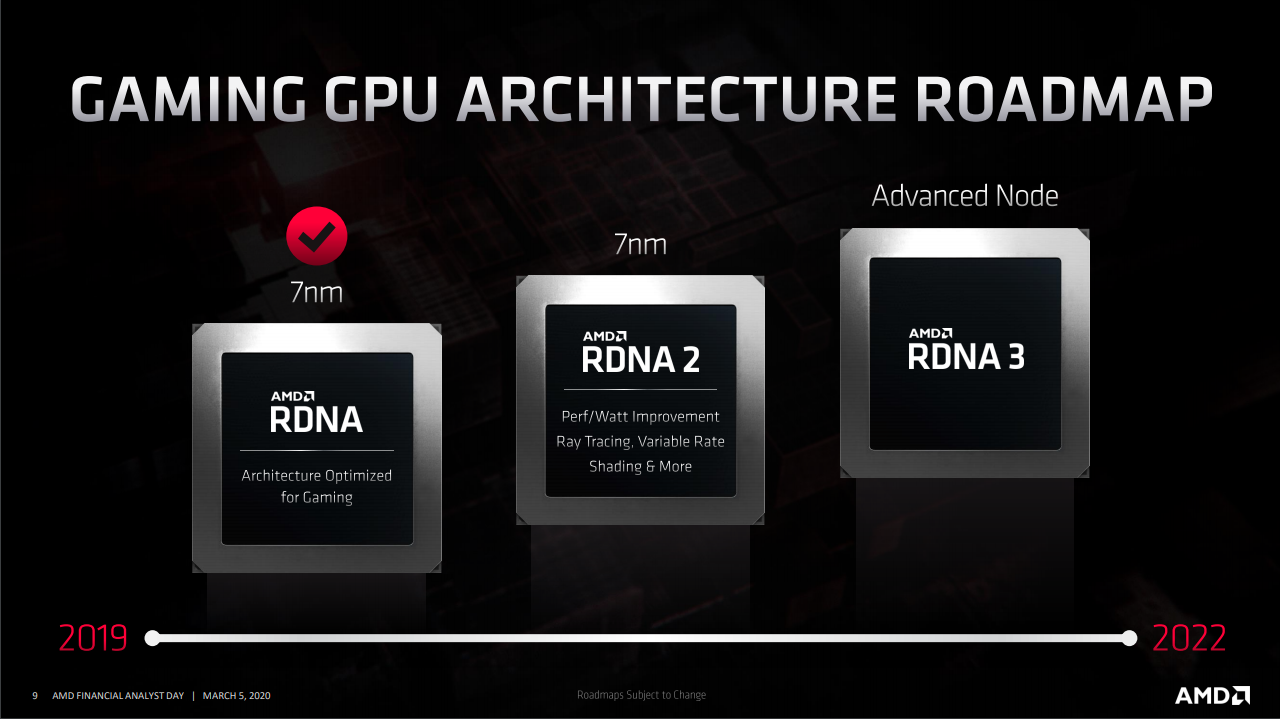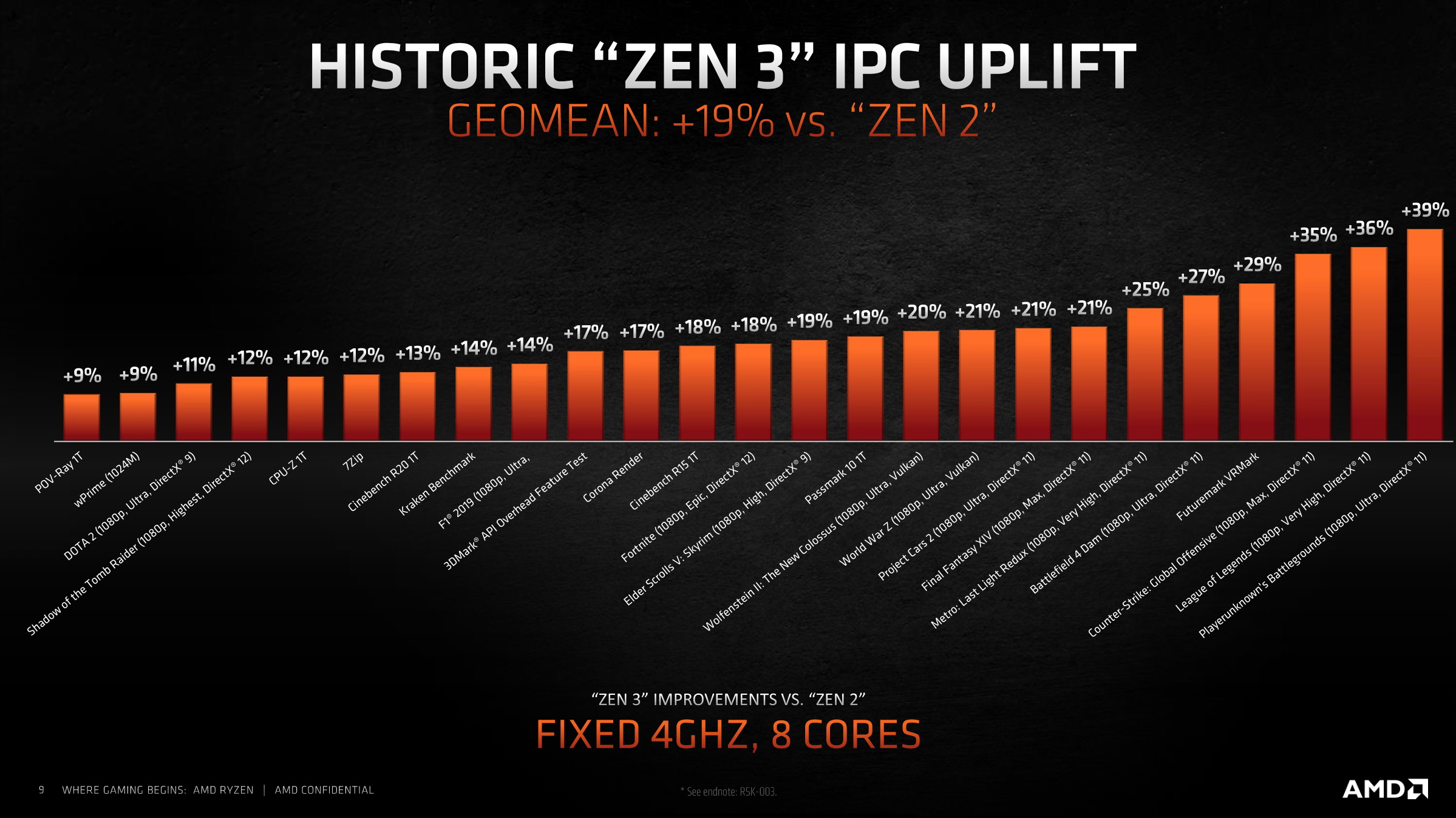AMD promises more pain for Intel and more competition for Nvidia
More performance, more efficiency, even more leverage of features like Infinity Cache to come from RDNA 3 and Zen 4

The Zen 3 and RDNA 2 CPU and GPU technologies are still hot out of the oven, but AMD is already talking about the dramatic efficiency and performance gains planned for Zen 4 and RDNA 3.
Speaking to investor outlet The Street, AMD big wig Rick Bergman explained that we can expect more of same from AMD’s next CPU and GPU architectures, both due out in 2022.
By that we mean more of what made RDNA 2 and Zen 3 such impressive steps over their predecessors. For RDNA 3, a major focus will once again be efficiency and performance per watt.
“It just matters so much in many ways. Because if your power is too high, as we've seen from our competitors, suddenly our potential users have to buy bigger power supplies, very advanced cooling solutions. And in a lot of ways, very importantly, it actually drives the cost of the board up substantially. And invariably, that either means the retail price comes up, or your GPU cost has to come down. We focused on that for RDNA 2. It's a big focus on RDNA 3 as well,” he says.
Unsurprisingly, there’s a little dig there at Nvidia’s power-hungry RTX 30 Series Ampere GPUs. But Bergman also implied that AMD’s Infinity Cache technology could be even more critical for RDNA 3, including for achieving that next step up in efficiency.

“On Infinity Cache, it's somewhat linked to that as well, to a certain degree. If you've been in graphics for a long time, you realize there's a pretty good correlation between memory bandwidth and performance. And so typically, the way you do it is you jack up your memory speed and widen your bus to open up performance. Unfortunately, both of those things drive up power,” Bergman explains.
Without question, AMD’s use of a relatively modest 256-bit memory bus while maintaining competitiveness, at least according to the benchmark numbers it has so far provided, is one of the most impressive aspects of RDNA 2 and the Radeon RX 6000 family of GPUs. If AMD’s Zen CPU architecture is anything to go by, RDNA 3 could be the graphics architecture that really delivers on AMD’s broader philosophy. After all, Zen 1 and 2 were good. But with Zen 3, AMD has taken a clear lead over the competition.
The biggest gaming news, reviews and hardware deals
Keep up to date with the most important stories and the best deals, as picked by the PC Gamer team.
Speaking of Zen, Bergman says Zen 4 will be every bit as comprehensive a redesign as Zen 3 was compared to previous architectures.
“Zen 4 is going to have a similar long list of things, where you look at everything from the caches, to the branch prediction, [to] the number of gates in the execution pipeline. Everything is scrutinized to squeeze more performance out.”


Best CPU for gaming: the top chips from Intel and AMD
Best graphics card: your perfect pixel-pusher awaits
Best SSD for gaming: get into the game ahead of the rest
Manufacturing nodes are, of course, a major factor for any CPU or GPU design, but if Bergman’s comments are anything to go on, we’re not expecting AMD to be particularly aggressive in adopting new nodes for its GPUs. While AMD has already confirmed that Zen 4 is slated for TSMC’s 5nm technology, as used in Apple’s latest A14 chips in the iPhone and new ARM-powered Macs, Bergman was more measured when it came to the prospect of shifting RDNA 3 to new nodes, including those using the latest EUV technology.
“Certainly EUV is an option with that process, and there are no technical limitations holding us back. Nor are there huge technical benefits either. So that's more of a manufacturing question. There are additional nodes on 7nm that we’ll take advantage of over time. But again, nothing to disclose,” Bergman says.
Of course, until we see the real, live product, this is all just talk. But AMD has certainly delivered on its promises for both CPUs and graphics recently. With each successful new product, AMD is building credibility. When it says Zen 4 and RDNA 3 will be comparable steps forward to Zen 3 and RDNA 2, you have to take that seriously. Which is likewise a seriously exciting prospect for the PC.

Jeremy has been writing about technology and PCs since the 90nm Netburst era (Google it!) and enjoys nothing more than a serious dissertation on the finer points of monitor input lag and overshoot followed by a forensic examination of advanced lithography. Or maybe he just likes machines that go “ping!” He also has a thing for tennis and cars.

